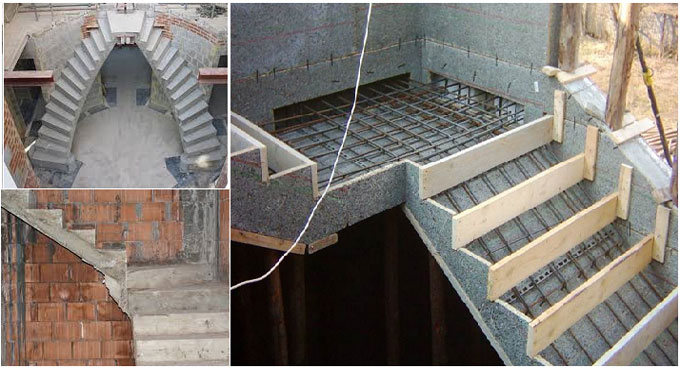
Formwork Reinforcement Stairs
Formwork is the term which is generally used for the method of creating a temporary mould into which concrete is flowed and formed. Traditional formwork is made up using timber but it can also be made of steel, glass fibre reinforced plastics and other materials. So basically the term formwork is used in relation to the forming procedure using a wide variety of materials.
While choosing formwork, the type of concrete and temperature of the pour are important considerations as they both effect pressure exerted. The formwork sides must be able of resisting the hydrostatic pressure of the wet concrete that will reduce to zero within some hours depending on the rate of setting and curing.
Concrete formwork must be strong enough to bear the pressure of the wet concrete. Concrete stairs additionally need temporary formwork so it is necessary to check timber supports or timber stairs, the peak from floor to floor as the start within the planning of a collection out.
Then this total rise is divided into an acceptable variety of risers and calculated the equal size to go as described within the chapter handling timber stairs.
A flight of stairs should be straightforward and close enough to climb; bound dimensions must be followed to confirm this.
Points to remember:
? Maximum rise should be 190 mm.
? Minimum going must be 255 mm.
? One going plus two rises should be equal 585 mm to 625 mm.
? Before putting the concrete reinforcing mesh id laid in position.


